Search Results for 'Galway Poetry Trail'
10 results found.
Mary O’Malley poem added to the Galway Poetry Trail
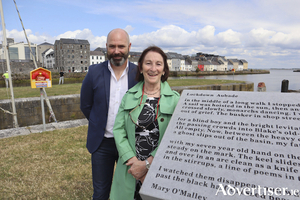
The latest plaque on The Galway Poetry Trail was unveiled this afternoon at The Claddagh Basin, featuring the poem ‘Lockdown Aubade’ by distinguished poet Mary O’Malley.
The construction of the Claddagh Basin
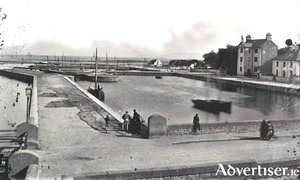
On January 1, 1848, Samuel U Roberts was appointed district engineer of the Districts of Lough Corrib. He spent the early part of that year making necessary preparations and arrangements and started navigational works in Galway on March 8, having taken possession of some of the lands required for the Eglinton Canal.
From Crooked Lane to Church Lane
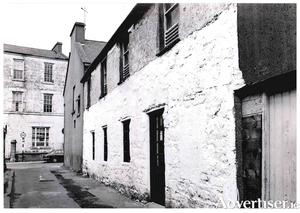
On a 1625 map of the city, this lane is referred to as ‘Crooked Lane’ and a little later in that century, it was commonly known as ‘Céim Cam’. In 1708 it was referred to as ‘Church Lane’ and on two documents dated 1824 it is down as ‘Bohercranmore’ (the Lane of the Big Tree) and also as Church Lane, sometimes called Lána an Teampaill. During the last century it was locally known as ‘O’Gorman’s Lane.
The Claddagh ring
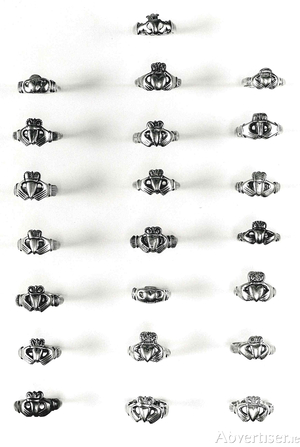
The story of the Claddagh ring, which is made up of a plain hoop attached to a hammered or cast bezel designed as two hands clasping a crowned heart, has so much folklore and myth attached to it that it is hard to know where legend ends and truth begins. The motif of clasped hands is usually referred to as a ‘fede’ or ‘hands in faith’ ring and has been used on love rings since Roman times. The heart, regarded by lovers as the seal of affection, made an appearance on rings at a later date, as did the crown which is the distinguishing feature of the Claddagh Ring from all the others.
Mayo poet to have plaque unveiled on Culture Night in Galway
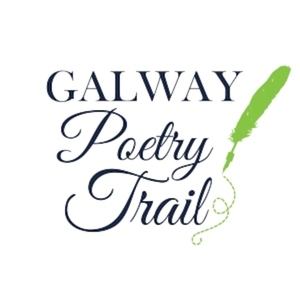
The latest plaque on the Galway Poetry Trail will be unveiled on Friday, September 17 at 2:30pm, on the River Walk by Jury’s Inn.
Culture Night 2021 - what are you going to see?

FOR 18 months the arts were in lockdown, but the autumn saw them return, and this weekend there will be events all over the city and county with Culture Night 2021, under the theme of ‘Come Together Again’.
Stone mad
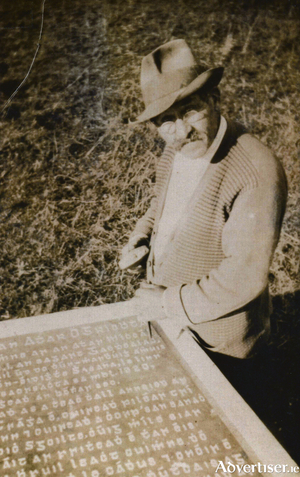
Like most towns, Galway was built using native stone and there was plenty of that around. There were black limestone quarries in Menlo and Angliham, and a limestone quarry at Merlin Park worked by the Blake family until about 1850 and later by Sibthorpes of Dublin. In about 1880, a Scotsman named Millar rented a number of quarries in the Galway area, two at Shantalla, one at Ballagh near Bushy Park, and one at St Helen’s, Taylor's Hill, where they quarried fine-grained red granite. There was a marble and granite works at Earl’s Island where one of the employees was a stonemason named Pat Fahy.
Celebrating Eilís Dillon
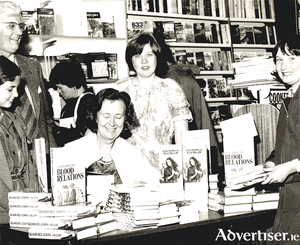
Eilís Dillon was born on March 7, 1920, in Galway. Her parents were Professor Tom Dillon and Geraldine Plunkett, who was a sister of Joseph Mary Plunkett. They were very republican and were forced to move a number of times. They lived for a time in Daingean House and later in Barna for a few years. Eilís went to Barna National School where she became fluent at Irish, later to the Presentation, and later still to the Ursuline Convent in Sligo. She worked for a while in the hotel business.
The Spanish Arch from Long Walk
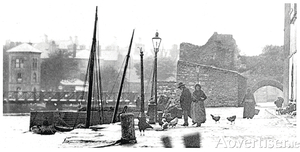
Long Walk was originally built as a wall by the Eyre family in order to construct a mud berth. Among those who lived there around the time this photograph was taken were Tom Gannon, Sarah O’Donnellon, Mrs Hosty, and Pateen Green. There was an entry through a large archway into a courtyard known as Green’s Alley and the five houses there were occupied by the Andersons, McDonaghs, Canavans, Gorhams, and Finnertys. A Mrs McDonagh lived next door in a building known as The Hall and further on lived Mrs Lee, John Folan, Bideen Joyce, Ella McDonagh, Mrs Folan, and Mike Walsh.
The Crane Bar
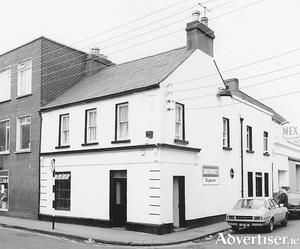
This pub, which is situated on the corner of William Street West and the Small Crane, was originally known as the West End Bar. In the 1930s it was owned by Paddy and Angela (known as Alda) Smith who lived over the pub. They also owned the garage behind the pub, which Paddy managed. This was where Bell, Book and Candle bookshop is today. Mrs Smith was from Loughrea and when she and her husband retired, they sold the business to her brother Mickey Coen. He ran it until 1970 when Padraig Cummins took it over. Padraig had a business in Menlo making concrete slabs.

